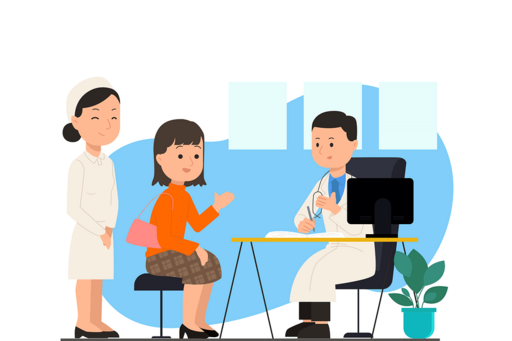
The third wave
Adult psychiatry confronts growing demands for diagnoses of autism and ADHD, a task complicated by comorbidities and societal pressures. Addressing these challenges necessitates societal adjustments and realistic expectations, emphasising a holistic approach beyond medical interventions alone.
[Posted on 18th March 2024 by Valdemar Landgren]
In adult psychiatry, it feels like we are standing right in the middle of a wave crashing over us; it almost feels like a tsunami. This wave consists of patients with diagnostic inquiries regarding autism and/or attention-deficit/ hyperactivity disorder (ADHD).
In psychotherapy research, there is sometimes talk of a first, second, and third wave of psychotherapy. The first wave consists of psychodynamic therapy, the second of cognitive behavioural therapy (CBT), and the subsequent third wave as further developments of both. Similarly, I feel that we can talk about three waves of diagnosis of neurodevelopmental/neuropsychiatric conditions NDCs/ESSENCE disorders. The first wave consisted of mapping the conditions and applying their diagnosis widely among children. Christopher Gillberg and research at the Gillberg Neuropsychiatry Centre (GNC) have been instrumental in this. The second wave involved learning to identify the same difficulties in adults within adult psychiatry. Behind difficult-to-treat eating disorders, prolonged depressions, and personality syndromes, there was sometimes an NDC that, if correctly addressed, could change the clinical course. Here too, research at the GNC was important, with Lena Nylander's thesis as an early example of this.

We are now in the third wave. While the number of children being assessed and diagnosed with NDCs continues to increase, so does the number of adults referred to adult psychiatry with the same inquiries. At the adult psychiatric clinic where I work, we receive approximately 1000 referrals per year with neuropsychiatric inquiries. This corresponds to about half a percent of the adult population in our catchment area. Over the course of 5 years, the number of patients in contact with adult psychiatry has increased by 1000 per year. Over 6% of the adult population in our county has contact with psychiatry services. The increase consists mainly of patients diagnosed with ADHD or autism. The majority have not undergone assessment as children.
What is causing this increase and how should we address it?
Not a passing problem.

Since society and healthcare have increased knowledge about NDCs in recent years and are discovering more children with ESSENCE conditions, one might think that fewer would need to be assessed as young adults, but that is not the case. Several longitudinal studies, including those from the GNC confirm the fact that individuals with ADHD as children and with ADHD inquiries as adults are only partially overlapping groups 1–5. The fact that we are assessing more and more as children will not necessarily solve the problem.
The ESSENCE condition becomes apparent later.
Research by Johan Nyrenius and David Eberhard at the GNC shows that the inquiries in young adults are often well-founded. At assessment, one often ends up with an NDC/ESSENCE diagnosis.6,7
There is a higher proportion of women among those diagnosed in adulthood. The reason may partly be that girls go under the radar in childhood and are not identified as easily as boys.1,8,9
Risk of confusion with other conditions.

Diagnosis in adults is more challenging as there are more sources of error to consider. Comorbidity with anxiety disorders and affective illnesses is higher, as is the prevalence of substance use disorders.2 For example, determining whether attention difficulties and impulsivity are an underlying cause of, or a consequence of, other psychiatric conditions is not straightforward. Weak theoretical ability, having a general intellectual capacity in the lower part of the normal range (Intelligence Quotient 70-85), is rarely identified. It also does not have a specific diagnosis code (and perhaps should not have one), but can nonetheless explain school difficulties for many individuals.10
The severity of symptoms and consequences varies over time.
Longitudinal studies of ADHD show that both the symptoms and their consequences are not constant over time 11. A period of disturbed sleep patterns makes the symptoms more pronounced 12. Completion of schooling transitioning to physical work reduces the consequences of, for example, restlessness. Being in a life situation unfavourable to one's executive function contributes to the propensity to seek care with neuropsychiatric inquiries among those with mild problems.
Increased societal demands.
The demands of schools and the labour market on individuals are likely strong contributing factors. The school curriculum has shifted from emphasising basic knowledge and factual learning to placing higher demands on the student's own planning ability and abstract thinking. Elisabeth Fernell and Christopher Gillberg have pointed out this issue for many years, as Fernell has written about.13 Many researchers and clinicians believe that today's school, in this way, elicits symptoms in more individuals than would have been the case if the goals were tailored to the children's abilities.10

Executive function, the ability to plan and execute actions in a purposeful manner, is, like other abilities, normally distributed in the population.14 A curriculum that places higher demands on executive function sets the "bar" so that fewer reach the goals. Individuals with lower executive function struggle in school. What in previous generations' school systems did not manifest in the same way becomes a challenge in today's school. We have just published a recent study examining the health and prevalence of neurodevelopmental problems in 11-year-old schoolchildren, confirming this image 15. Special support can be provided based on need, but in practice, a diagnosed condition in healthcare is often required.
Completing secondary education is almost a minimum requirement to establish oneself in the Swedish labour market. Primary school becomes an effective sorting mechanism, where those who do not meet the goals are at increased risk of unemployment and social exclusion. Even in a tangible and concrete job such as in home care, you are expected to be able to handle several digital systems to carry out your workday. Having care and interest in people is not enough. The simpler and manual jobs decrease in favour of robots and automated processes. Individuals with difficulties in maintaining structure or intuitively understanding what is expected of them are the ones who are eliminated first and end up without jobs.
Increased demands on healthcare.
The general expectations and demands on healthcare have also increased. If something is not right, there should reasonably be an action and solution. The priest and the church have been replaced by healthcare professionals.16 Accessibility to information also means that patients and their families are more knowledgeable and express specific desires. Who wouldn't want a diagnosis if the treatment could significantly simplify and improve life?
Is there a solution?

There is no "magic bullet." Some factors can be influenced by healthcare while others are under the control of society and politics.
Societal change always reflect in the daily life of healthcare. During the years of large migration flows to Sweden, psychiatry services received patients after suicide attempts due to rejection of asylum applications. We were expected to offer treatment, but the cause was beyond our control. Similarly, the prevalence of mesothelioma, a form of lung cancer often caused by asbestos exposure, which lung doctors were forced to deal with, was a condition whose cause was beyond their control. It was society and not healthcare that provided the solution, to ban asbestos and to observe special safety measures in exposure.
In a similar vein, society needs to be adapted to how people actually function. When 15% of schoolchildren do not reach the curriculum's goals, it needs to be questioned whether the Swedish National Agency for Education is setting reasonable demands and teaching children the right things.17 The school should educate in basic skills in a way that does not exclude those who lack academic aptitude. This is also done by valuing practical skills and career paths, and by helping individuals find their "niche".18 Such a school would reduce the demand for assessments of children in the gray zone for neuropsychiatric problems.
The solution is not singular, and it is not for psychiatry to assess and pharmacologically treat everyone referred for ADHD symptoms. Based on demand and existing resource allocation, it would consume all resources for other conditions that also need treatment, such as psychotic disorders, bipolar disorder, and severe depressions. The solution is plural and involves matching people's environments with their actual capabilities, and having reasonable expectations both on healthcare and on what we as individual individuals need to manage in life.
[This is a blog. The purpose of the blog is to provide information and raise awareness concerning important issues. All views and opinions expressed are those of the writer and not necessarily shared by the GNC.]